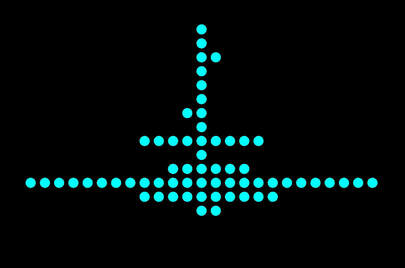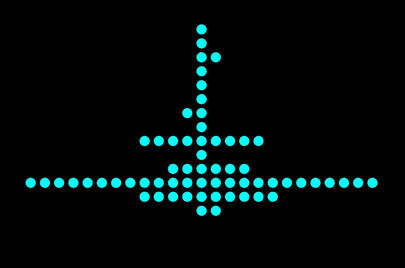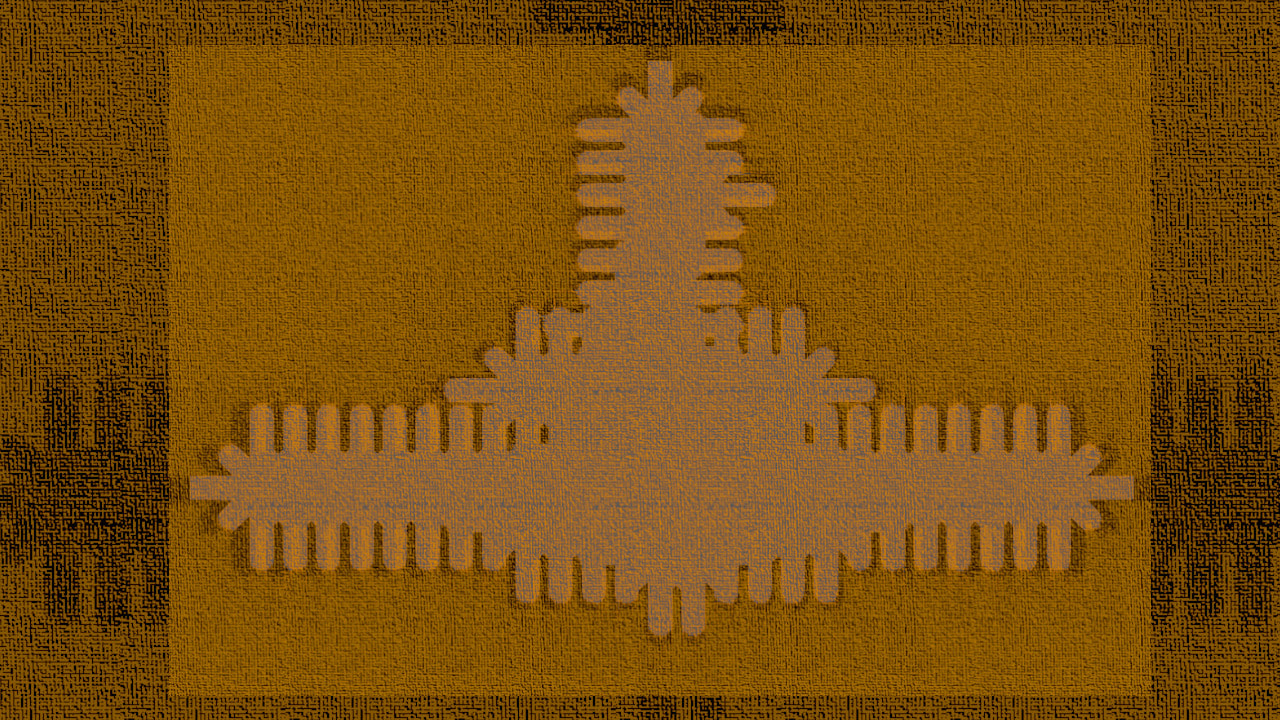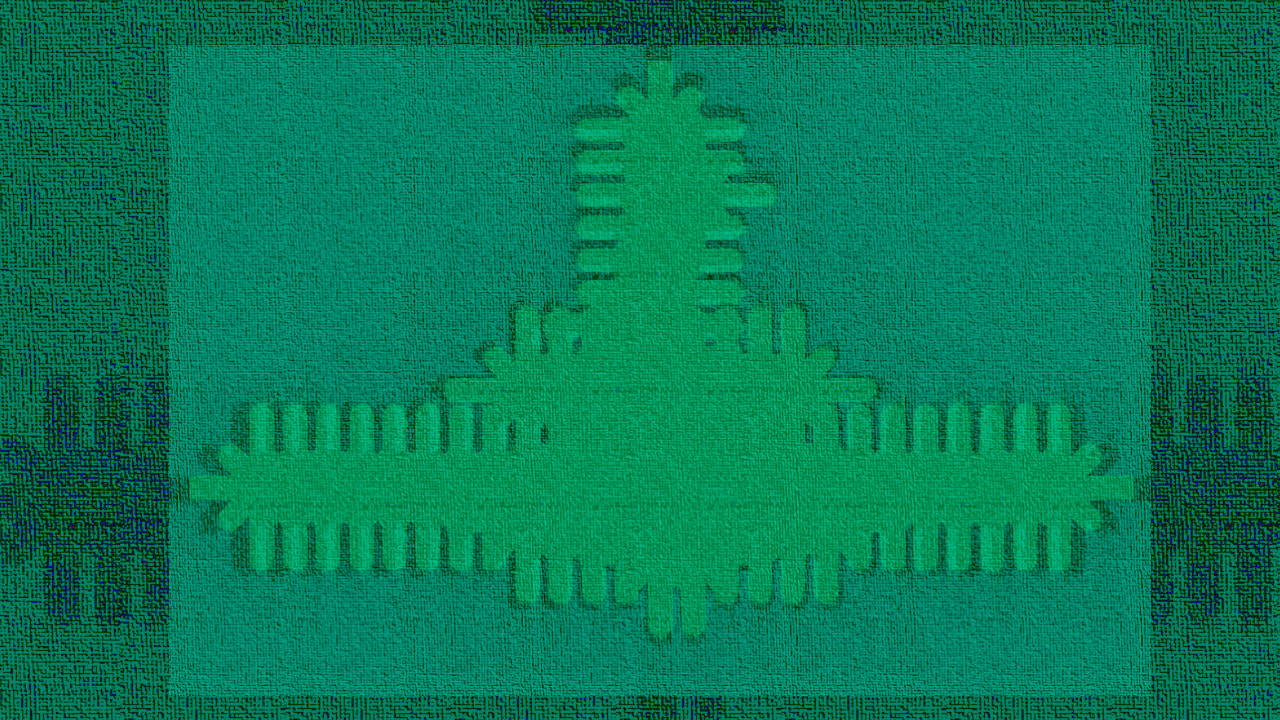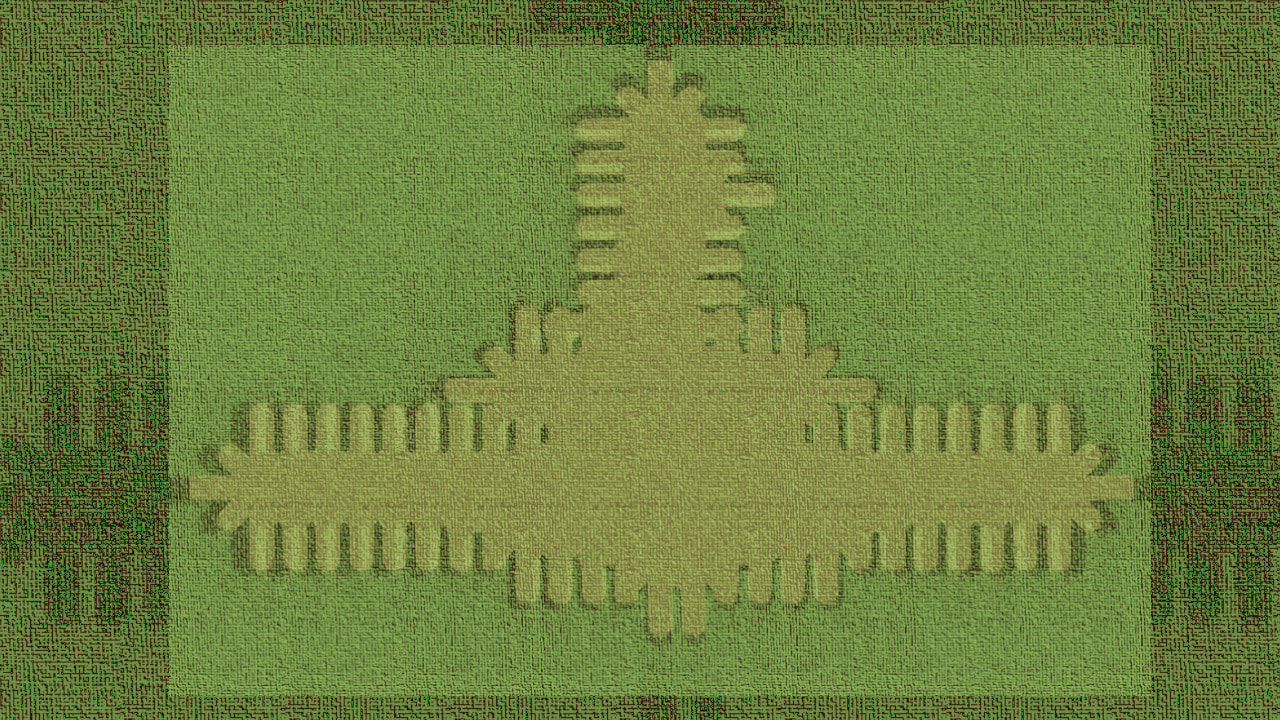Improvising With The Other-Than-Human
The Black Hole | Snake Pit | Container | Crack | Box
In 2021, Bayo Akomolafe and friends undertook inviting 1000 people from across the globe into the We Will Dance with Mountains Course /Festival. The experience included 9 online events, guests, rituals, art, research components and an online community hosted through Mighty Networks (like facebook but private),
In the Mighty Networks a plethora of self-organising groups formed. One of these, was the Shadow Craft-Raft: Audio Voice Exchange. This group was set apart by its framework whereby spoken recordings of thoughts were required instead of writing, in order to be a more accessible space.
A conversational thread emerged in this group which became known as the Black Hole or Snake Pit or Crack. This particular thread began with a reflection by Craig Slee, which explored the architecture of ableism and the work of Fiona Kumari Campbell,
Many of the inhabitants of the Black Hole are self-proclaimed cripples or have lived experience of having 'aberrant' bodies. A group of people from a number of continents shared personal often long and rambling, free flowing thoughts with each other. Failing was encouraged, admitting to not understanding was encouraged, questions were encouraged and an intimate sharing of our vulnerability wove into a tapestry of deep philosophical enquiry with humour and care becoming core ingredients. The audio nature of the responses and the invitation to fail and be messy allowed for improvisation. A kind of riffing or rapping, not knowing what you were going to say until it was said. A welcoming of other voices, other agencies, other-than-human, ancestors, hungry ghosts or the other-wise, to speak through us. Over a period of a couple of weeks the thread amassed 63 comments. Some were 20 mins long, structured in haphazard ways that one would never share in written form, as the ready technology and cultural habit of editing to make neat, contained linear sense would have undoubtedly been invoked to ensure a more decipherable and saleable product. I would wake up at odd times of night and check to see if anyone had added thoughts to the thread. Gems emerged in the cacophonous, somewhat overwhelming lostness. I began to improvise with and add sound design and music to these extracted gems. This process allowed me to inhabit some of the pieces, find the glittering or dense sections, the trickster in the corner of our eyes, in the darkness of the worm hole, black hole, crack, lostness or crossroads, where boundaries are intersecting and interrelated.
Meanwhile, some people began to speak of getting "lost in there" and feeling discombobulated. Curious - as this was one of the main provocations of the course. What if we invite lostness? What if we search out the crossroads where there are either no paths or so many we have no idea which way is up. One of the other core provocations of the course was to 'enter the cracks' and find the generative nature of them. It soon became clear that we really had entered a crack/container/black hole/box together.
Just as the conversation turned to overtly exploring the importance of containers in ritual, creative processes and learning environments - the container fractured, the box opened and allowed a closer view of the edges and contents of the container. One of the inhabitants of the co-created container posted a comment in response to the container, in another conversational thread in the Shadow Craft/Raft. This trickster action shone a light on the edges of the box as well as the contents of the box- elucidating the notion that containers are porous. As soon as a container forms, the edges attracts energy, the unexpected dwells on the edges and disruptions are to be expected. Possibilities multiply on the edges.
In the Mighty Networks a plethora of self-organising groups formed. One of these, was the Shadow Craft-Raft: Audio Voice Exchange. This group was set apart by its framework whereby spoken recordings of thoughts were required instead of writing, in order to be a more accessible space.
A conversational thread emerged in this group which became known as the Black Hole or Snake Pit or Crack. This particular thread began with a reflection by Craig Slee, which explored the architecture of ableism and the work of Fiona Kumari Campbell,
Many of the inhabitants of the Black Hole are self-proclaimed cripples or have lived experience of having 'aberrant' bodies. A group of people from a number of continents shared personal often long and rambling, free flowing thoughts with each other. Failing was encouraged, admitting to not understanding was encouraged, questions were encouraged and an intimate sharing of our vulnerability wove into a tapestry of deep philosophical enquiry with humour and care becoming core ingredients. The audio nature of the responses and the invitation to fail and be messy allowed for improvisation. A kind of riffing or rapping, not knowing what you were going to say until it was said. A welcoming of other voices, other agencies, other-than-human, ancestors, hungry ghosts or the other-wise, to speak through us. Over a period of a couple of weeks the thread amassed 63 comments. Some were 20 mins long, structured in haphazard ways that one would never share in written form, as the ready technology and cultural habit of editing to make neat, contained linear sense would have undoubtedly been invoked to ensure a more decipherable and saleable product. I would wake up at odd times of night and check to see if anyone had added thoughts to the thread. Gems emerged in the cacophonous, somewhat overwhelming lostness. I began to improvise with and add sound design and music to these extracted gems. This process allowed me to inhabit some of the pieces, find the glittering or dense sections, the trickster in the corner of our eyes, in the darkness of the worm hole, black hole, crack, lostness or crossroads, where boundaries are intersecting and interrelated.
Meanwhile, some people began to speak of getting "lost in there" and feeling discombobulated. Curious - as this was one of the main provocations of the course. What if we invite lostness? What if we search out the crossroads where there are either no paths or so many we have no idea which way is up. One of the other core provocations of the course was to 'enter the cracks' and find the generative nature of them. It soon became clear that we really had entered a crack/container/black hole/box together.
Just as the conversation turned to overtly exploring the importance of containers in ritual, creative processes and learning environments - the container fractured, the box opened and allowed a closer view of the edges and contents of the container. One of the inhabitants of the co-created container posted a comment in response to the container, in another conversational thread in the Shadow Craft/Raft. This trickster action shone a light on the edges of the box as well as the contents of the box- elucidating the notion that containers are porous. As soon as a container forms, the edges attracts energy, the unexpected dwells on the edges and disruptions are to be expected. Possibilities multiply on the edges.
|
I began to visualise the pattern of the conversational thread. From one comment or thought, one or two responses arose and then down the thread went. After a certain amount of descending, suddenly 6 thoughts, comments, responses, then 9, then 25, then 10. I decided to explore the threads shape in a spreadsheet and this is what it looked like. Each dot represents a comment in the conversational thread. The main thread is the centre line and the multiple lines of dots are the responses/replies to comments in the main thread. |
The shape of the thread could be seen as a descent into a crack or container. It also looked, to my rhythm informed mind, like a rhythmic pattern. I then translated the dots/numbers into vocal percussion and drum rhythms (I was blessed to learn Kuchipudi, mouth rhythms & dance with Niki Shepherd many moons ago). Music and visuals give us a means of looking at form and dynamic in generative ways. By looking at patterns and the relationships between things, rather than the 'things' themselves, dynamic shapes and patterns emerge. My creative work has explored the relationships between sound, form, dynamic and movement for many years, through many diverse projects, working as a musician with dancers (including contemporary Flamenco choreographer Annalouise Paul) and the Sound of Everything project. Insights arise from this diffractive, multi-genre/form approach to information or ideas. Such as...
* The further the pattern descends, the larger the rhythmic cycle is - the more complexity can emerge.
*As the rhythm cycles grow to 6, 9, 10, 25, time viscerally slows down and it feels like there is more room in the rhythm. At the top of the pattern where there are just one's and two's, it feels rushed in comparison to the longer cycles.
*Nuance and complexity can emerge through a descent into a larger container/crack/box.
*A descent, together with others, or multiple rhythms, allows for a rich tapestry of inter-elated ideas/rhythms to emerge.
* Complexity can be collaboratively held in a shared container/language/tapestry of understandings.
* An ancient, orally transmitted, rhythm tradition can shed light on form and dynamic or any 'thing'.
*Containers spontaneously erupt within other containers.
*This can be interpreted as a disruption or a means to new possibilities (Multiple rhythms can be held within a larger cycle or core rhythm or fluidly shift to another core rhythm/container.
*Shared language and a complex of ideas can create a container.
*A willingness to be confused, lost, messy and failing is generative.
*'Mistakes'/things which don't quite fit in the box, can lead to new rhythms
*It is easier to see the container from the edges.
*It is necessary to be in the container to 'know' its contents.
*The container looks different depending on your view point.
*Complexity emerges with more thoughts, more people, more anything in the container.
*Complexity emerges more freely through a descent into something.
*Fast and simple things/rhythms are like a surface - harder to penetrate or add flesh to.
*Complexity emerges when time slows down - where there is a willingness to dwell together in a messy, longwinded, rambling exploration.
Oral Traditions
I studied with the great Egyptian Drum Master, Ibrahim El Minyawi (RIP) in London in 2001. He was a blessing in my life and generously shared a tradition that he was the keeper and protector of. An oral tradition passed from person to person. This was his families' role, to pass on the traditions of rhythm, dance and song. I learnt /played with him, drank tea, drove around London visiting his friends while he tapped out rhythms on the dashboard & sang the songs/rhythms. His beautifully generous sharing, of the thousands of years old rhythm traditions, come to mind as a means of further exploring some of the insights which have arisen in the cracks.
1) Ibrahim told me that no one has time to learn the rhythms anymore. The rhythms were embedded in rich song/story/dance traditions. Long cycles of rhythm that sat with the song/stories, similar to the very long rhythmic patterns in Classical Indian music. To suit the rushed, surface existence of Western colonial, simplistic thinking, the rhythms have been translated into shorter chunks /cycles - 16 at the most - 8's, 6's and 4's most commonly. Once simplified and codified, of course, true to colonial thinking patterns, people then begin to argue about what the 'right' rhythm is, what it is called and how to play it correctly! In order to codify what it is - the living rhythm is thus kinda killed. The tradition is an improvisational tradition which has patterns/bone structures at the core - which must be expressed freely within the container of the core rhythm to be true to form. In other words a porous container or bone structure embellished with fleshy aberrations/innovations/poetry as opposed to a spreadsheet of stable, repeatable, rote learnable, exact, right 'things'. Thus containers, traditions, bone structures can assist freedom to emerge rather than being opposed to emergence in a binary constriction. Within these orally transmitted cultural traditions innovation and tradition are not an opposed binary (as contemporary funding bodies seem to think). Innovation, emergence, freedom of expression arises out of a container, a core rhythm, a porous yet defined generative core/bone structure. This idea resonates with one of the phrases that emerged in the thread -'Love the Box.' Perhaps one of the great paradoxes and co-existent, diffractive, dissonant concepts - emergence and loving the box/container/crack, are one in the same. If we throw out the bath there is nowhere for either the bath water or the baby to exist!
2) When playing with Ibrahim in an improvisational moment he stopped me and said.. ' Its too jazz- the core rhythm should always be there, otherwise you will lose people'. The container/core rhythm allows for connection which then allows for complexity to emerge within that container/bone structure. If we focus too much on the emergent, generative, innovative - there is no ground, no core, no substance, no connection, no care. In order to get to the edges we need to invoke the core. In order to find the glimmer of light, we need to be willing to enter the darkness, in order to find a new pathway at the crossroads we must be willing to be lost, in order to stumble across newness we must acknowledge and love the box/container/core rhythm we are in. An atmosphere of trust, of being connected, 'at home', held 'in' something is generative. Fear, distrust, feeling at all exiled or not sure if you are doing it 'right' or if others are doing it 'right' - causes disruptions to the shared rhythm. If too many people are on the edges of the box or the edges of the rhythm, the rhythmic container can lose form - either becoming something else or becoming simply a change of dynamic if the original rhythm continues throughout -like an example of good jazz where the soloist takes it to an absolute extreme but the rhythm section holds it down despite the soloist pushing at the edges of the rhythmic or melodic container. Dissonance can be the most glorious thing when it resolves. Feeling 'at home' and 'welcomed' in the box/container/core ritual rhythm invokes trust, an attitude of blessing, simplicity, slowness - which allows for complexity to emerge.
it may well seem like these are all unrelated ideas, that there are no meaningful connections in these disparate, diffractive, multiplicitous thoughts. For me this process has elucidated some extremely generative insights. Perhaps it will only make sense to those who have been inhabiting the black hole with me! Or perhaps it only makes sense to me ... that is also possible and totally ok if it has only been creatively generative for me :) It feels like the ancestors are happy with me :)
Blessings to all who have cast their eyes over these musings!
Marianthe Loucataris
* The further the pattern descends, the larger the rhythmic cycle is - the more complexity can emerge.
*As the rhythm cycles grow to 6, 9, 10, 25, time viscerally slows down and it feels like there is more room in the rhythm. At the top of the pattern where there are just one's and two's, it feels rushed in comparison to the longer cycles.
*Nuance and complexity can emerge through a descent into a larger container/crack/box.
*A descent, together with others, or multiple rhythms, allows for a rich tapestry of inter-elated ideas/rhythms to emerge.
* Complexity can be collaboratively held in a shared container/language/tapestry of understandings.
* An ancient, orally transmitted, rhythm tradition can shed light on form and dynamic or any 'thing'.
*Containers spontaneously erupt within other containers.
*This can be interpreted as a disruption or a means to new possibilities (Multiple rhythms can be held within a larger cycle or core rhythm or fluidly shift to another core rhythm/container.
*Shared language and a complex of ideas can create a container.
*A willingness to be confused, lost, messy and failing is generative.
*'Mistakes'/things which don't quite fit in the box, can lead to new rhythms
*It is easier to see the container from the edges.
*It is necessary to be in the container to 'know' its contents.
*The container looks different depending on your view point.
*Complexity emerges with more thoughts, more people, more anything in the container.
*Complexity emerges more freely through a descent into something.
*Fast and simple things/rhythms are like a surface - harder to penetrate or add flesh to.
*Complexity emerges when time slows down - where there is a willingness to dwell together in a messy, longwinded, rambling exploration.
Oral Traditions
I studied with the great Egyptian Drum Master, Ibrahim El Minyawi (RIP) in London in 2001. He was a blessing in my life and generously shared a tradition that he was the keeper and protector of. An oral tradition passed from person to person. This was his families' role, to pass on the traditions of rhythm, dance and song. I learnt /played with him, drank tea, drove around London visiting his friends while he tapped out rhythms on the dashboard & sang the songs/rhythms. His beautifully generous sharing, of the thousands of years old rhythm traditions, come to mind as a means of further exploring some of the insights which have arisen in the cracks.
1) Ibrahim told me that no one has time to learn the rhythms anymore. The rhythms were embedded in rich song/story/dance traditions. Long cycles of rhythm that sat with the song/stories, similar to the very long rhythmic patterns in Classical Indian music. To suit the rushed, surface existence of Western colonial, simplistic thinking, the rhythms have been translated into shorter chunks /cycles - 16 at the most - 8's, 6's and 4's most commonly. Once simplified and codified, of course, true to colonial thinking patterns, people then begin to argue about what the 'right' rhythm is, what it is called and how to play it correctly! In order to codify what it is - the living rhythm is thus kinda killed. The tradition is an improvisational tradition which has patterns/bone structures at the core - which must be expressed freely within the container of the core rhythm to be true to form. In other words a porous container or bone structure embellished with fleshy aberrations/innovations/poetry as opposed to a spreadsheet of stable, repeatable, rote learnable, exact, right 'things'. Thus containers, traditions, bone structures can assist freedom to emerge rather than being opposed to emergence in a binary constriction. Within these orally transmitted cultural traditions innovation and tradition are not an opposed binary (as contemporary funding bodies seem to think). Innovation, emergence, freedom of expression arises out of a container, a core rhythm, a porous yet defined generative core/bone structure. This idea resonates with one of the phrases that emerged in the thread -'Love the Box.' Perhaps one of the great paradoxes and co-existent, diffractive, dissonant concepts - emergence and loving the box/container/crack, are one in the same. If we throw out the bath there is nowhere for either the bath water or the baby to exist!
2) When playing with Ibrahim in an improvisational moment he stopped me and said.. ' Its too jazz- the core rhythm should always be there, otherwise you will lose people'. The container/core rhythm allows for connection which then allows for complexity to emerge within that container/bone structure. If we focus too much on the emergent, generative, innovative - there is no ground, no core, no substance, no connection, no care. In order to get to the edges we need to invoke the core. In order to find the glimmer of light, we need to be willing to enter the darkness, in order to find a new pathway at the crossroads we must be willing to be lost, in order to stumble across newness we must acknowledge and love the box/container/core rhythm we are in. An atmosphere of trust, of being connected, 'at home', held 'in' something is generative. Fear, distrust, feeling at all exiled or not sure if you are doing it 'right' or if others are doing it 'right' - causes disruptions to the shared rhythm. If too many people are on the edges of the box or the edges of the rhythm, the rhythmic container can lose form - either becoming something else or becoming simply a change of dynamic if the original rhythm continues throughout -like an example of good jazz where the soloist takes it to an absolute extreme but the rhythm section holds it down despite the soloist pushing at the edges of the rhythmic or melodic container. Dissonance can be the most glorious thing when it resolves. Feeling 'at home' and 'welcomed' in the box/container/core ritual rhythm invokes trust, an attitude of blessing, simplicity, slowness - which allows for complexity to emerge.
it may well seem like these are all unrelated ideas, that there are no meaningful connections in these disparate, diffractive, multiplicitous thoughts. For me this process has elucidated some extremely generative insights. Perhaps it will only make sense to those who have been inhabiting the black hole with me! Or perhaps it only makes sense to me ... that is also possible and totally ok if it has only been creatively generative for me :) It feels like the ancestors are happy with me :)
Blessings to all who have cast their eyes over these musings!
Marianthe Loucataris


